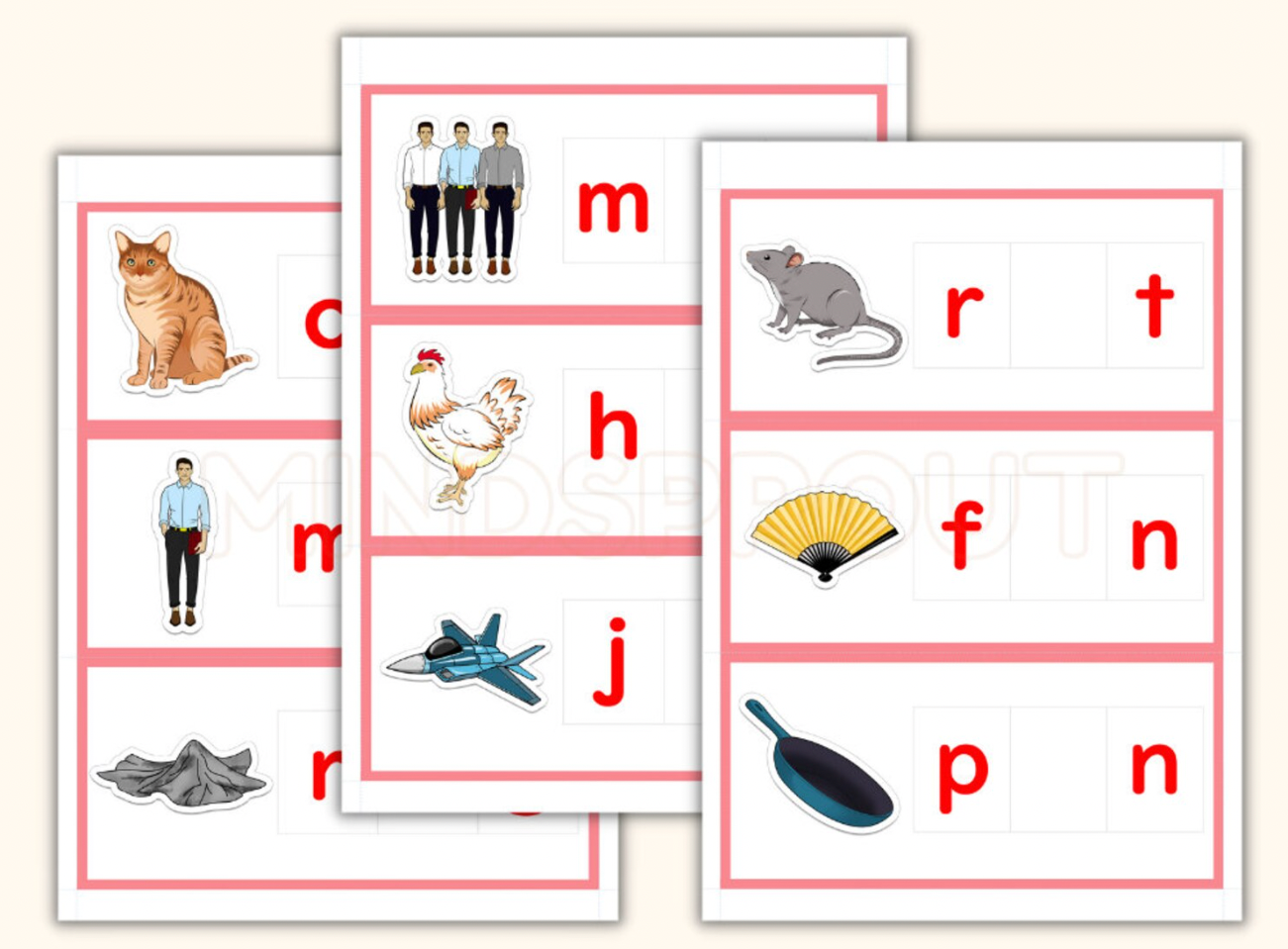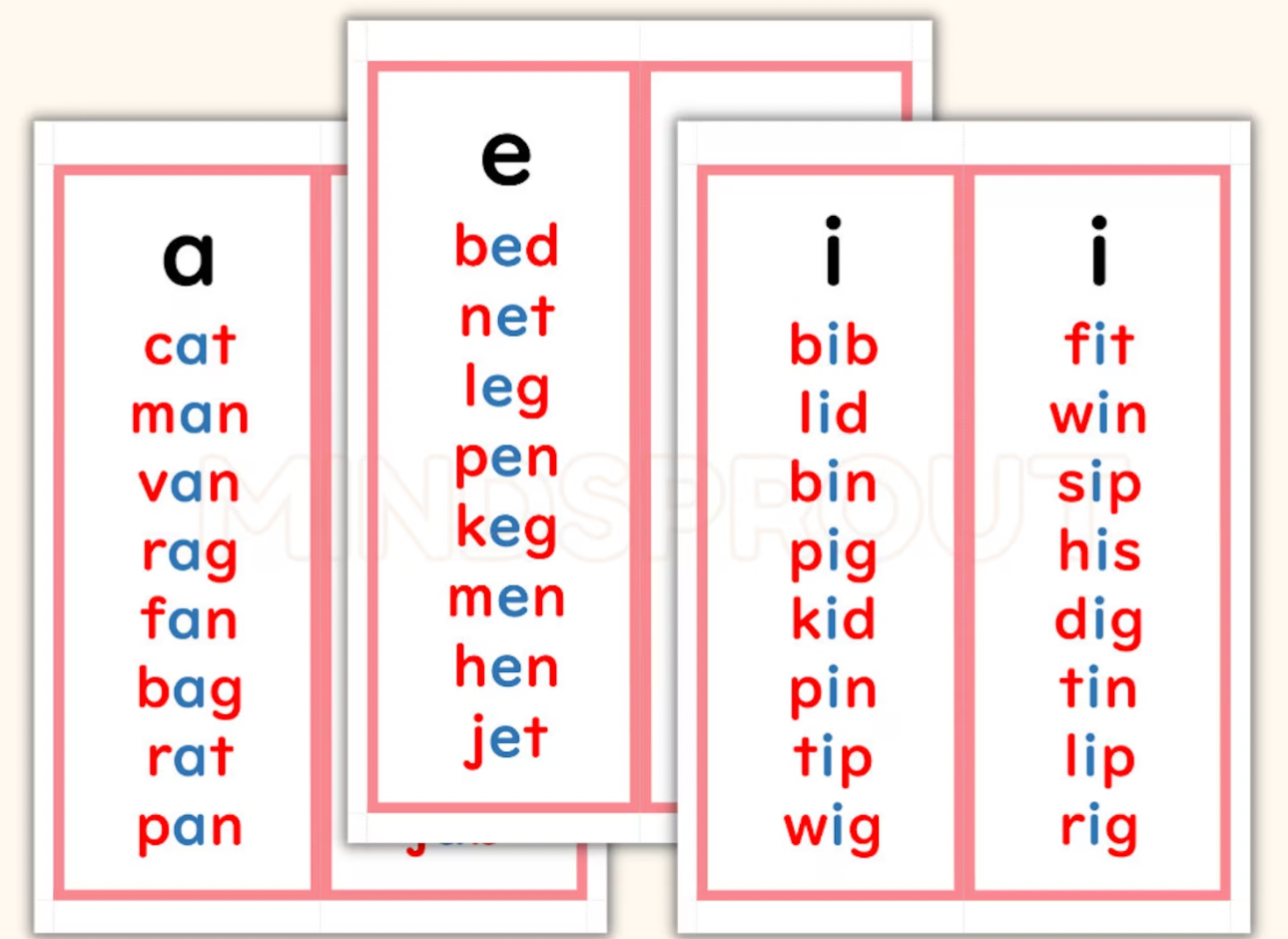When we began our Montessori homeschooling journey and everything about Montessori and homeschooling was new to me, one common method of learning reading and writing the English language was using the Pink/Blue/Green scheme.
This has been developed for Montessori schools in English-speaking countries and initially focuses on phonetic words to help children become solid readers.
So here, I’ll be sharing some of the pink and blue series materials you can use at home or in class.
Encode Words with Movable Alphabet
But before that, the child is first began with the use of Movable Alphabets. We have printable small movable alphabet in different colored sets for up to elementary level, in PRINT, D’NEALIAN, & CURSIVE.
The child shall build CVC words with the movable alphabets for objects and for pictures. You can choose objects from the pink series wordlists below.

Montessori Pink Language Series

After much practice with building CVC words using the movable alphabet, these are the following activities the child can do:
Matching with Word Cards
With the prepared word cards, match these with (1) objects and then (2) pictures.

Fill-in the Missing Vowels
This exercise aims to help readers recognize middle vowel sounds better, as these can be difficult to distinguish from each other. By testing whether the reader can identify the correct missing middle sound, this exercise helps solidify recognition of these sounds.

Word Lists
Using word lists can help children become more comfortable with seeing multiple words on a page. This is also the first step to learning how to put words together in sentences.

Command Cards
Using command cards can make reading more enjoyable, especially when you do it with a friend. It involves practicing silent reading and the doing the action on the card for your partner to guess.

Matching Word Sheets
With mixed selection of words with different middle sounds, match the picture to the words with a line by connecting.

What We Eventually Decided to Use
Would like to add some more to the pink series but frankly, I moved on from using the PBG to the more simple approach by Muriel Dwyer as described in this booklet from NAMTA.
I find it much more simple to follow and prepare, plus the progression makes much more sense especially for untrained homeschoolers. Find my blog posts about each stage here.


